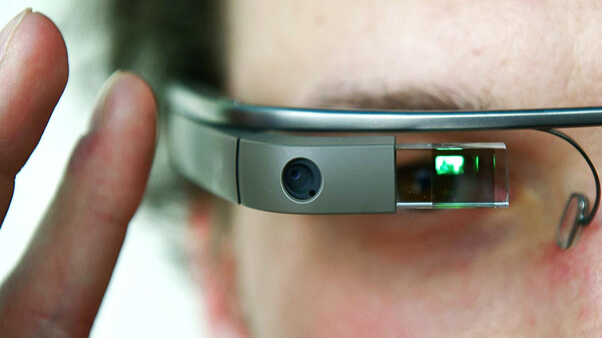In the competitive world of content marketing, all of us are looking for ways to optimise our services and stay ahead of the curve. Understanding and exploiting techniques such as eye tracking is a good place to start.

The Birth of Eye Tracking
Following on from our recent article looking at Neuromarketing for Inbound Marketers, I’ve decided to turn my attention towards one of neuromarketing’s signature research tools, eye tracking.
First developed in 1879 by the French ophthalmologist, Louis Émile Javal, eye tracking was initially invented as a means of studying reading habits. By conducting ‘gaze motion research’, Javal observed that we tend not to read smoothly across a page of text, but rather take a series of short, unconscious stops. He labelled these rapid pauses, eye fixations.

![]()
Since the pioneering discoveries of Javal, eye-tracking studies have proved a popular method of research across a variety of disciplines. From childhood education to medicine, eye-tracking has been used by psychologists to gain insights into how we interact and engage with visual stimuli.
How Inbound Marketers Can Harness the Power of Eye-Tracking
In 2000, during his keynote address at the Eye Tracking Research and Applications Symposium, pioneering engineer psychologist and eye-tracking expert, John W. Senders, likened eye tracking to a phoenix rising from the ashes again and again to help solve new problems. And while eye-tracking is still widely used by medical and scientific researchers, over the past decade it is marketing – both off and online – which has sparked eye-trackings most recent re-birth.
From as far back as the 1980’s, eye-tracking has been used as a tool to assess how we interact with computers. As Robert J.K Jacob & Keith S. Karn state, “as personal computers proliferated, researchers began to investigate how the field of eye tracking could be applied to issues of human–computer interaction.”
However, while these initial studies of human–computer interaction were conducted for the austere purposes of medical and scientific research, advancements in eye tracking technology; the recent boom in wearable technology; and the growth and development of neuromarketing, have led inbound marketers to adopt eye tracking as means of better understanding how users engage with web content.
Delving into the Mind of the User
Advancements in eye tracking technology, such as the development of the SMI eye-tracking glasses 2 [see video below] and the Tobii Glasses 2, present online marketers with a wealth of research opportunities.
By utilising such technologies not only can we content creators learn how to present our work to our readers in such a way that compels them to actually read it, but web-developers can perform research which informs them of what users want in terms of layout and design.
![]()
Over the course of the past fifteen years there’s been innumerable eye-tracking studies performed on web users, including a host of insightful studies by the Nielsen Norman Group. Here are some of the key findings.
1. Faces Matter
As Neil Patel writes in his article, 8 Powerful Takeaways From Eye Tracking Studies, “a page that has pictures of a person’s face encourages interaction and viewing and decreases a bounce rate.” However, faces must be used wisely.
This is perfectly illustrated in a classic eye-tracking study performed by Think Eye-Tracking.
![]()
In the above image we can see that the model’s eyes are staring straight at the camera, this draws the user’s gaze towards her, rather than the product. Once the model’s eyes are focused on the product, as in the image below, our gaze intuitively follows. This simple, yet profound alteration, led 14 times more people to look at the product.
![]()
2. Segment Your Content
This is an important point for all content writers. Eye-tracking studies prove just how effective it is to break-up your content into digestible chunks. In 2004 The Poytner Institute released the Eyetrack III study, a study which looked at how users read news content online, and their research found that shorter paragraphs performed unequivocally better than longer ones.
In fact, stories with short paragraphs received twice as many overall eye fixations. With this in mind, bloggers and content writers should look to segment their content with headings, bullet points, and where appropriate, lists.
3. English Speaking Users Read Left to Right
If you’re reading this post, it’s safe to assume, you speak fluent English. For all the English language web developers out there, I strongly recommend you read Nielsen Norman’s research, Horizontal Attention Leans Left, as it highlights just how much of our attention is focused on the left hand side of a web page. In fact, the average user spends up to 69% of their time looking towards the left.
As the graph below shows us: the percentage of viewing time decreases significantly as we shift our gaze to the right.
![]()
4. Consider Your Type
If you want people to read, rather than scan your content, use smaller type. If you consider that the average time users spend on a webpage is a measly 10-20 seconds, inbound marketers and web developers must use all the weaponry in their arsenal to keep users on page.
According to Poynter, “smaller type encourages focused viewing behavior (that is, reading the words), while larger type promotes scanning. In general, our testing found that people spent more time focused on small type than large type.”
5. Scrolling
People hate scrolling, right? Well… Not exactly. Despite the fact that you should be looking to feature your most important content “above the fold” – as this is the part of the page users see first – if your content is compelling enough, people will scroll “below the fold” .
In an article published late last year on the KISSmetrics blog, Gregory Ciotti, wrote “relying on the screen above “the fold” to do all of the heavy lifting is one of the biggest usability mistakes you can make. The idea that it’s the only place users will browse is a complete myth.”
In his article, Greg cites multiple eye tracking tests that dispel this popular myth. The reality is, if you can focus the users attention and push them to explore your site, they will venture “below the fold”.
Google Pay-Per View
Looking beyond the benefits of existing eye tracking technologies and how inbound marketers can exploit them, I turn my attention to the future, and how wearable eye tracking will come to influence marketing in the years ahead.

The release of Google Glass is a potential game changer for marketing. Despite the fact that Glass as it currently stands remains very much a prototype, used almost exclusively by tech heads, there’ll inevitably come a time when the technology is adopted by the broader public. As Josh Miller from CNET mentions in one of the earliest reviews of the first edition of Google Glass,
“Google Glass Explorer Edition is intended for developers and “early testers,” and while this group of customers may include those who feel like they can afford a $1,500 wearable device, everyday people aren’t the primary target yet. But yes, Google Glass is a very real product, and it really works, but its app support remains pretty limited.”
But how exactly will Google’s bite-sized wearable computer change the face of marketing and advertising?
In August 2013 Google was granted a patent that seems to pave the way for the company to leverage Glass with a “pay-per-gaze” advertising model, according to Luisa Rollenhagen. Using Glass’ eye tracking capabilities, Google will charge advertisers based on Glass users’ seeing their ads, and the time they spend looking at them; an advertising model that in the long term could supersede their current pay per click model.
The Future of Eye Tracking Offline
Eye-tracking technologies are not only applicable online, over the coming years they’ll more than likely be introduced at your local shopping centre.
According to a 2013 article published in New Scientist, researchers from the Max Planck Institute for Informatics in Saarbrücken, Germany and Lancaster University in the UK, are currently testing a groundbreaking new product called, SideWays; a product capable of tracking consumers in-store and then targeting them online.
“SideWays uses a video camera and a computer vision program, which finds your pupils by recognising the corners of your eyes and where they sit relative to your face”, according to the New Scientist article. “Once you approach an item [in store], the device automatically starts tracking what you peer at — which could allow shop owners to retarget you online.”
The development of in-store eye tracking products like SideWays, is something I find disconcerting as a consumer. However, what really scares me is the thought of such a product being coupled with the vast array of big data sets currently tracking me online. Such a coupling will not only allow retailers to capture information relating to my online shopping behaviors, like they already do, but also provide them with accurate data relating to my intent to purchase offline. Once this happens, they’ve got me – hook, line and sinker.
Conclusion
Eye tracking studies have been used across myriad fields, as a way for psychologists to gain insight into how we respond to visual stimuli. But in recent years, inbound marketers and web developers have adopted and adapted this ever popular neuromarketing technique to their advantage.
By allowing us to find out exactly how users interact with web content, eye tracking studies have armed us with a wealth of data. This data is invaluable, and if you can exploit it intelligently, you will not only become a better content creator, but a more effective marketer.
Have you ever used eye tracking technology to influence your marketing decisions? If so, tells us about your experiences in the comments below.

Comments (0)